OpenSees Cloud
OpenSees AMI
Shear Verse, Same as the First
Original Post - 10 Jul 2022 - Michael H. Scott
Show your support at Buy Me a Coffee.
In the same vein as a previous post, this post will show a basic comparison of material nonlinear displacement-based and force-based formulations with axial-flexure-shear interaction in frame elements.
The timoshenkoBeamColumn element interpolates constant shear deformation
along its length, along with constant axial deformation and linear
curvature. Two-point Gauss-Legendre integration over the element is
sufficient to capture the linear-elastic solution. Just like the
dispBeamColumn element, mesh refinement is necessary to improve the
computed solution. In addition,
using more integration points
or a different quadrature method won’t buy you much.
With the forceBeamColumn element, the interpolation of section shear
force is based on equilibrium in the basic system and section shear
force-deformation drops right into the element state determination.
While three Gauss-Lobatto points is sufficient to obtain the exact
linear-elastic solution, four or five Lobatto points are generally
sufficient to capture the spread of inelasticity along an element.
A square steel plate subjected to a lateral load will be the structural model for comparing the two element formulations. I will use a fiber section with multi-axial stress-strain behavior in order to simulate the interaction of axial and shear stress in the constitutive relationship.
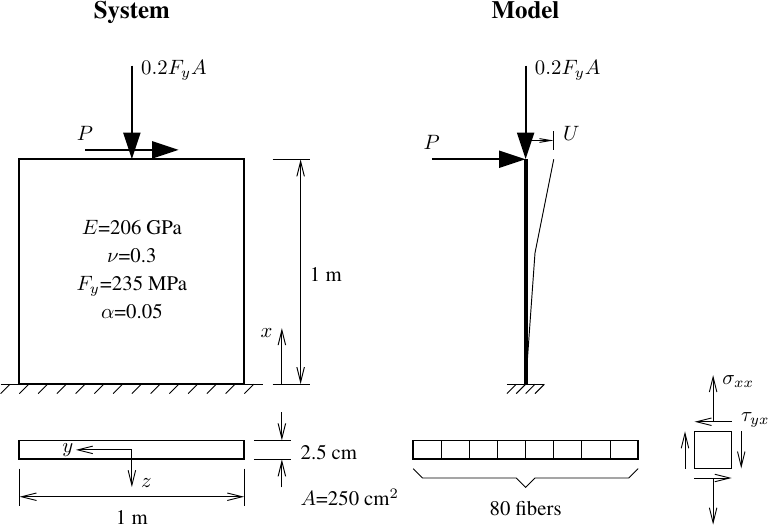
The lateral load, P, increases from zero to 2000 kN in 100 steps of load controlled analysis. To make things interesting, I added a constant axial load equal to 20% of the gross capacity of the plate section. And to make things easy, let’s assume the out of plane response is restrained.
The load-displacement response of the plate is shown below using one force-based element with three Lobatto points and one displacement-based (Timoshenko) element with two Legendre points.
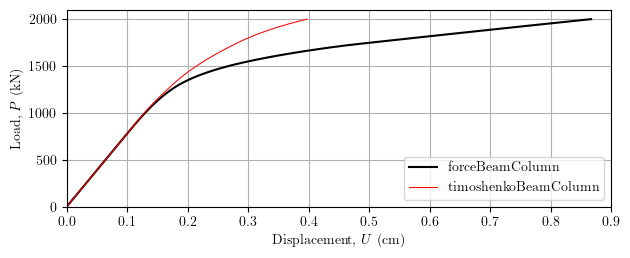
Just like flexure-only analysis, one displacement-based element over-estimates the post-yield stiffness and strength.
The internal section forces and deformations at the final load step are shown below for both element formulations. The force-based formulation captures the exact solutions of constant axial shear force and linear bending moment along the height (the model is statically determinate) while the displacement-based formulation captures equilibrium in an average sense. Even though the final global displacement differs substantially for the two element formulations, the internal deformations are within the same ballpark, for whatever that’s worth.
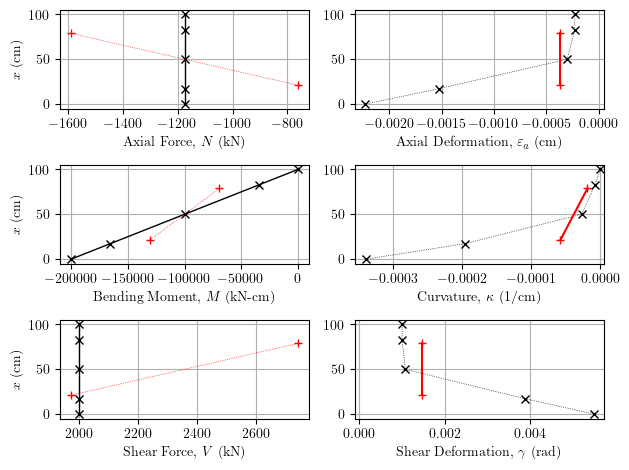
We know from finite element theory that we can improve the computed solution by increasing the number of integration points in the force-based element and by increasing the number of elements per member when using displacement-based elements. The load-displacement response is shown below using five Lobatto points in the force-based element and five displacement-based elements (two Legendre points) along the height of the plate.
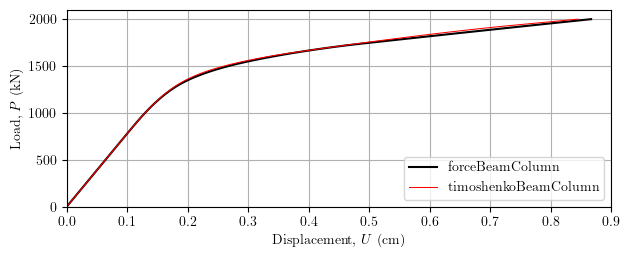
The global response using the two formulations is much closer now. Going from three to five Lobatto points in the force-based element led to slightly higher lateral displacement while the displacement-based (Timoshenko) element response improves significantly compared to the analysis with one element.
The internal section forces and deformations with the refined analyses are shown below. While there’s not a significant change in the internal distribution of forces and deformation with the force-based element, we see the average equilibrium improve for the displacement-based elements (look closely at the section axial and shear force plots–the x-axes don’t have the same range as the plots for one element). The piecewise constant approximations for axial and shear deformation and the piecewise linear approximation of curvature hug the force-based solution.
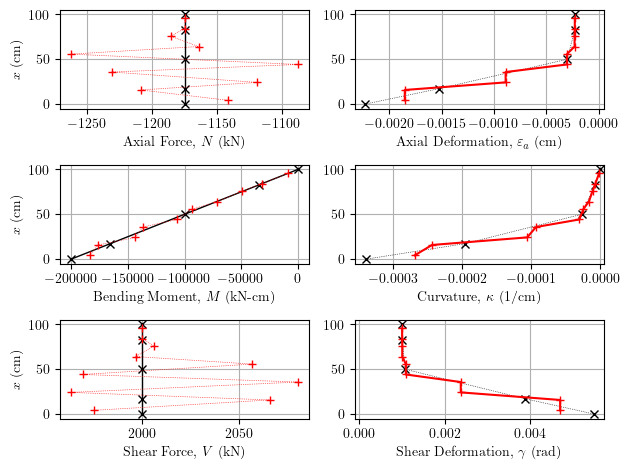
Shear force-deformation works within the 2D and 3D versions of the
forceBeamColumn element, but there is only a 2D implementation of the
timoshenkoBeamColumn element. It should be as easy as adding a few extra
cases to the switch statements in the dispBeamColumn state
determination, but nothing is ever as easy as you think. Accounting for
shear in the
mixedBeamColumn element
state determination is doable, but not so easy.